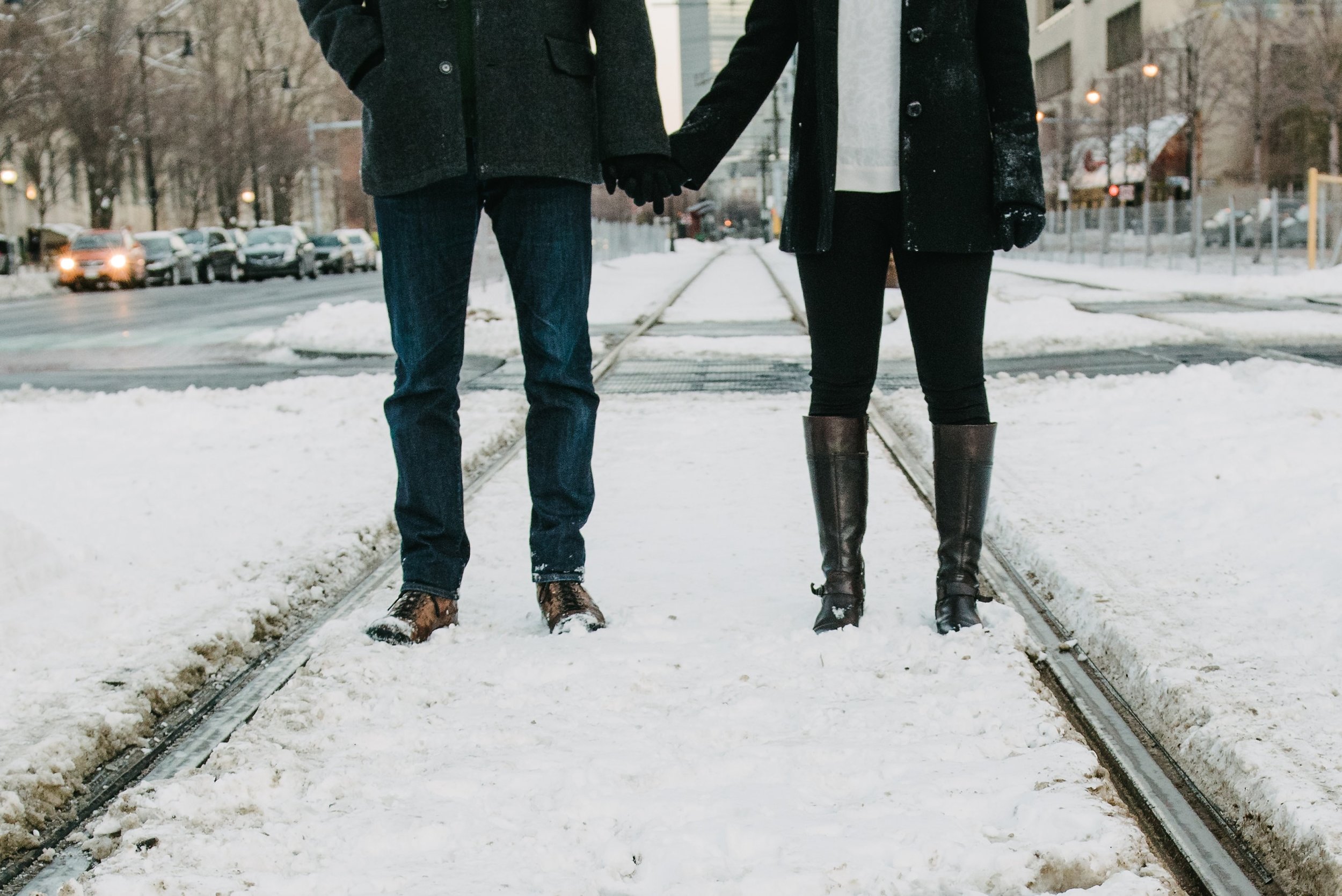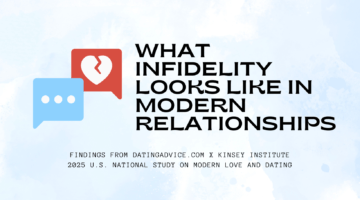What Will “Cuffing Season” Look Like in the Time of COVID-19?
December 7, 2020 by Justin Lehmiller
Where I live, winter is almost here, and that means “cuffing season” is about to get underway. Just in case you aren’t familiar, cuffing season describes the tendency for people to couple-up during the coldest and darkest months of the year.
There’s a lot of evidence that people seem to show increased interest in dating and relationships in the winter. For instance, Google searches for sex and relationships rise, as do sign-ups for online dating services. People are also more likely to change their relationship status on social media. So what’s behind this trend anyway? Why do people appear more interested in relationships in the winter? And how will the COVID-19 pandemic affect all of this?
Let’s step back first and consider how cuffing season came to be in the first place. This is a biopsychosocial phenomenon, meaning that biological, psychological, and social factors all work together to produce it. On the biological side, one of the likely contributing factors is changes in sunlight exposure. Sunlight affects production of the neurotransmitter serotonin [1]. Serotonin is a key chemical in the brain for regulating mood. When there’s more of it, we tend to be happier (which, incidentally, is why a lot of antidepressant medications are designed to keep serotonin levels high).
During the winter, the brain produces less serotonin due to less sunlight exposure. This is why some people experience the “winter blues,” and it’s possible that people are compensating for this change in mood by going out and seeking sexual and/or romantic connections.
On the psychosocial side, people may feel more pressure to be partnered during the winter due to the fact that there are several major holidays, along with lots of family gatherings and parties (although that’s going to change this year—more on that below). All of these social events may make some people feel self-conscious if they don’t have a date. Also, parents and family often put pressure on single folks at this time of year by repeatedly asking when they’re going to “settle down” or get married.
Then there’s also the fact that it’s colder during the winter and lower temperatures might make the prospect of snuggling up to someone at night seem all the more appealing. Why wear socks to bed or get out extra blankets when you could cuddle up to someone or “Netflix and chill” instead?
In short, the phenomenon of cuffing season probably isn’t driven by just one thing and different people might want to get “cuffed” for very different reasons. However, these are unusual times we’re living in. So how will COVID-19 affect this year’s cuffing season?
Going back to the biological factors, any effects due to sunlight exposure aren’t going to change, so to the extent that this is a major driver, we’re not likely to see much change. However, the psycho-social factors are very different right now.
For example, the social pressure to have a relationship probably isn’t going to be as strong this year. For one thing, many people will forego family gatherings or limit their size in order to decrease risk of viral transmission. Plus, many people see dating as risky for their health (or the health of their families) right now and some people are worried about being shamed for dating during a pandemic. So, when you factor this in, there might actually be less pressure to bring someone new into the family circle this year.
At the same time, however, we also know that loneliness and stress are elevated right now. We don’t have nearly as many opportunities for in-person social interaction as we used to, which makes it harder to meet our needs for belongingness and social connection. This could very well increase interest in dating beyond what we normally see at this time of year because people just aren’t getting the level of socialization, intimacy, and touch that they’re used to—and they haven’t been for many months now.
With all of that said, we won’t be able to say what cuffing season during COVID-19 will look like until we’re deeper into it and have some data. However, what we do know is that some of the factors that drive cuffing season are different this time around, some of which will reduce pressure to date, while others will increase the drive to connect.
What do you think will happen? Weigh in with your thoughts in the comments section below.
Want to learn more about Sex and Psychology? Click here for previous articles or follow the blog on Facebook (facebook.com/psychologyofsex), Twitter (@JustinLehmiller), or Reddit (reddit.com/r/psychologyofsex) to receive updates. You can also follow Dr. Lehmiller on YouTube and Instagram.
[1] Lambert, G. W., Reid, C., Kaye, D. M., Jennings, G. L., & Esler, M. D. (2002). Effect of sunlight and season on serotonin turnover in the brain. The Lancet, 360(9348), 1840-1842.
Image Source: Photo by Alice Donovan Rouse on Unsplash

Dr. Justin Lehmiller
Founder & Owner of Sex and PsychologyDr. Justin Lehmiller is a social psychologist and Research Fellow at The Kinsey Institute. He runs the Sex and Psychology blog and podcast and is author of the popular book Tell Me What You Want. Dr. Lehmiller is an award-winning educator, and a prolific researcher who has published more than 50 academic works.
Read full bio >


